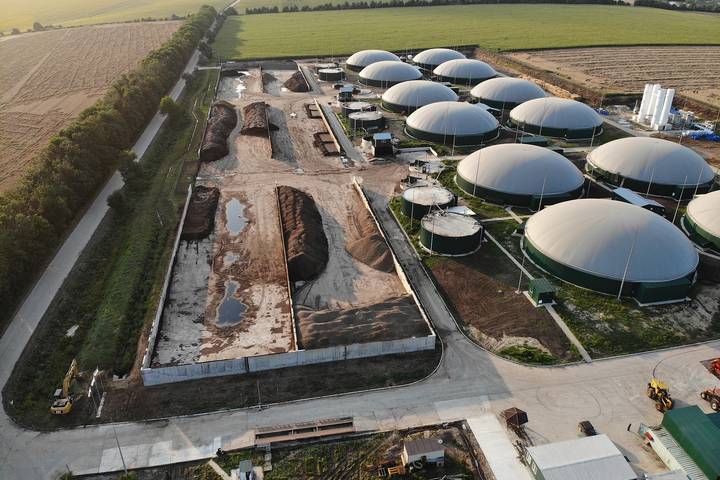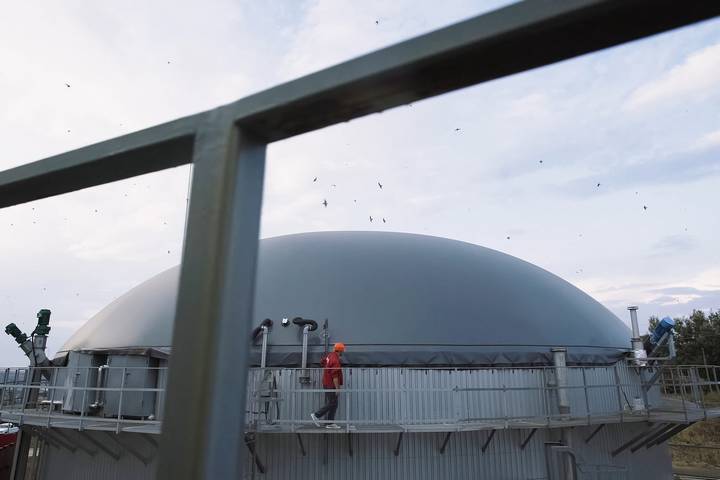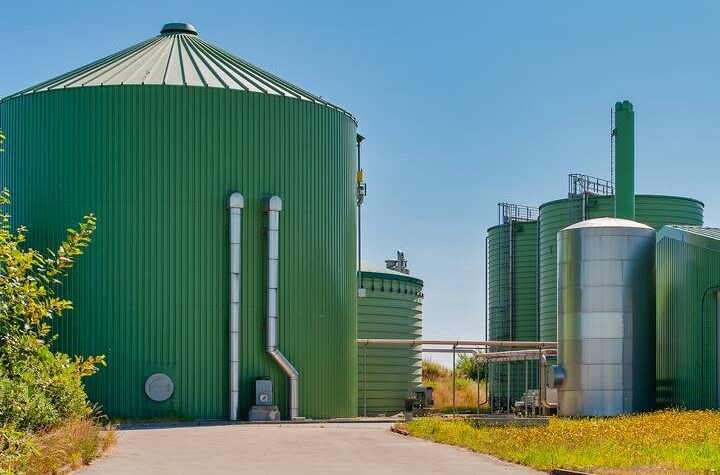In 2021, the global installed capacity of biogas touched approximately 21.4 gigawatts, a 4.6% increase from the previous year. Biogas refers to a blend of several gases mainly obtained through anaerobic digestion after organic materials such as animal and plant products are broken down by environmental bacteria. However, there’s a lot more to the production of biogas that cannot be explained in the mere definition.
Before learning the production of biogas, it would be best first to understand what makes up the compound. Biogas combines hydrogen sulphide, nitrous oxide, carbon dioxide (20-40%), and methane (55-80%).
It is produced from basic materials such as agricultural waste, sewage, manure, and food waste and is a renewable energy source. There are two primary forms of anaerobic digesters: Engineered digesters for half-liquid waste and covered effluent ponds for fully liquid waste.
Biogas can be advanced to gas, used as a transportation fuel, or incorporated into the natural gas grid. The biogas production process isn’t as complex as perceived by many. Let’s explore how biogas is produced.
Hydrolysis Process
The first step of biogas production is hydrolysis, whereby the enzyme converts complex organic molecules into simpler units for further processing. It mainly occurs after the collection of the materials necessary for biogas production. The materials are then treated upon collection to enhance their digestibility and biogas production process.
Some standard pre-treatment methods used in biogas production include mixing feedstock, grinding, or shredding to improve the surface area for hydrolysis. Specifically, organic polymers such as carbohydrates are broken down into sugar to aid in the next phase of biogas production. Other organic polymers worked on in this step include fats and proteins into amino acids and fatty acids, respectively.
Fermentation Process
The fermentation phase of the biogas system, also known as Acidogenesis, is whereby the broken-down amino acids, fatty acids, and sugars from the previous step are further converted into simpler compounds.
The recently generated organic materials are converted to biogas through the acetogenesis process with the aid of the acetogenic bacteria. Acids such as butyric, propionic, and acetic acids are attained out of the process alongside carbon dioxide and hydrogen as by-products.
Methanogenesis Phase
Methanogenesis is the third step of biogas production. The previous phase’s hydrogen, acetic acid, and carbon dioxide are converted into methane gas using methanogenic archaea. The main components of biogas, methane, and carbon dioxide are generated in this process, constituting 55-80% and 20-40%, respectively.
Other compounds generated from the process, although at smaller levels, include nitrogen, water vapour, hydrogen sulphide, and oxygen. However, the composition may differ under different production environments and depending on the size of the feedstock used.
Factors Affecting Biogas Production
While biogas production spans the above main steps, various factors influence the process’s speed and efficiency. Some factors include temperature levels, which should be 40⁰C-70⁰C, pH value (6.5-7.2), feedstock composition, and biochemical and chemical oxygen demand.
Other factors include carbon-to-nitrogen ratio, moisture content, organic loading rate, co-digestion, and pre-treatment. Also, ammonia, toxic substances, nutrient composition, agitation, and pressure affect biogas production.
Benefits of Biogas Production

Biogas production boasts plenty of benefits to the investors and the environment at large, including:
Biogas is a safer and healthier cooking alternative than other forms, such as firewood cooking. The gas boasts little poisonous gas and is easier to clean after cooking.
Biogas as an energy source is relatively affordable as opposed to others such as firewood and electricity. That’s because the technology used in biogas production is also cheap and widespread.
The by-products of biogas can be effectively used as organic fertilizers to substitute chemical ones which are pretty toxic to human health.
Biogas production boasts insignificant levels of air, soil, and water pollution compared to other energy sources, such as geothermal.
Drawbacks of Biogas Production

It would be inappropriate to discuss biogas without touching on its few drawbacks. With the constantly developing technology, everyone is moving away to more advanced energy sources, such as electricity, neglecting biogas and its benefits. That means large space producers will likely suffer loss or total closure.
Additionally, biogas may still contain some impurities even after pre and post-treatment during production, which are unsafe for human health. Biogas producers are subjected to high levels of foul odour that are uncomfortable and unsafe, occurring from the feedstocks before treatment.
They also incur high costs on transport because biogas production centers are mainly located miles away from the social amenities and distribution centers. Lastly, biogas production is limited to specific forms of organic matter, requiring producers to filter out the unwanted ones from the rest- which is quite draining and costly.

